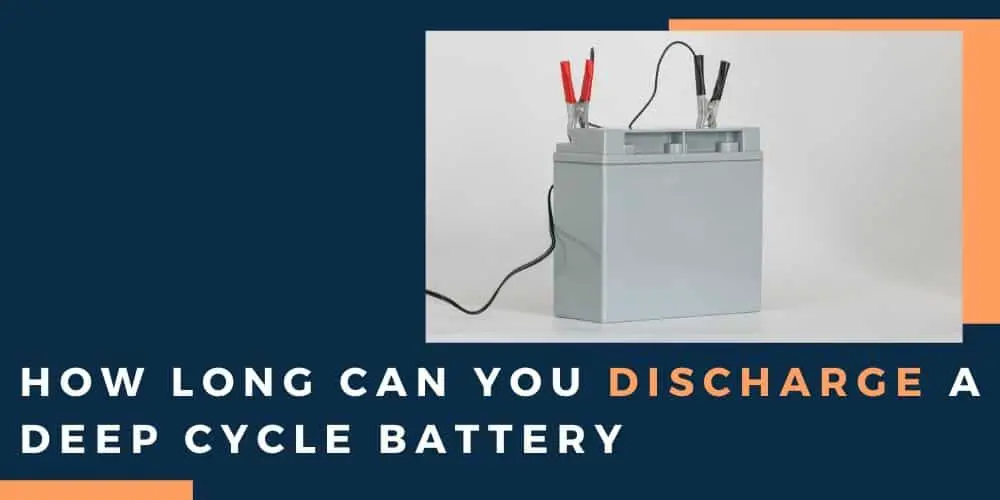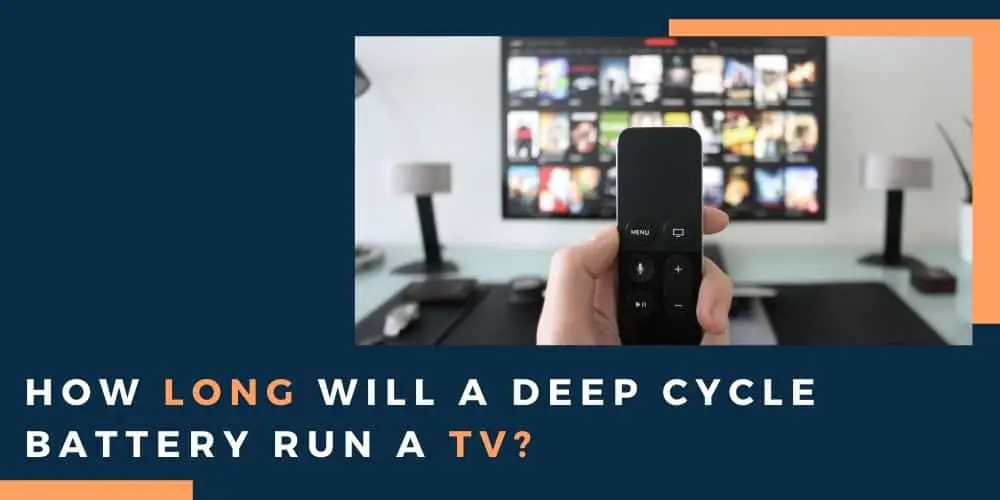Deep cycle batteries are used in a wide range of applications such as electric wheelchairs, golf carts, floor scrubbers, and off grid renewable energy.
However, since these batteries are designed to release slow energy and then undergo a charge, many people wonder how long you can discharge your deep cycle battery before it needs to be charged again.
A deep cycle battery is designed to be discharged significantly and as such will be able to withstand being discharged by up to 80% over multiple uses.
That said, one of the most important factors for a lot of people is taking good care of their battery so that it will have a much longer lifespan.
In this guide, we are going to be looking at some of the best practices to prolong the life of your deep cycle battery and get the most out of it in terms of performance.
Contents
Understanding The Difference Between A Deep Cycle Battery And A Regular Battery
When we talk about deep cycle batteries, we are referring to batteries that are designed to release power slowly over an extended period of time.
This will discharge the battery which then needs to be recharged. This action of discharging and charging is known as a cycle.
There are other types of battery that are not designed to work this way. Think about the battery in your car.
This needs to be fully charged at all times because its job is to supply a momentary burst of powerful energy that gets the motor started.
However, after this point, the power requirements of the car are handled by other components.
Depth Of Discharge
The question in point is one regarding how far you can discharge a deep cycle battery.
Now this will vastly depend on the particular battery you are using.
For example, a lot of deep cycle batteries are designed to discharge by up to 50% but there are some that will manage quite easily with an 80% discharge.
However, this will also play a role in how many cycles you will get out of the battery.
Typically speaking, if you use your battery every day and discharge as much as 80% then you might expect to get around 200 complete cycles.
On the other hand, if you are discharging to 50% then the life of the battery may be significantly extended with an expected 750 complete cycles.
If you are not discharging your battery enough, this will have ad adverse effect and could also play a part in reducing the overall life of the battery.
For example, the last thing you would want to do is drain by 10% and still recharge every day.
In addition to this, you should also make sure that, when you charge your battery, you give it sufficient time to charge. It is no good giving it a quick boost and hoping for the best.
These batteries will perform much more reliably when they are given a complete charge to ensure a full cycle.
The way that this works is as the battery charges it will undergo conditioning which prevents sulfraction damage from occurring.
Taking Care Of A Deep Cycle Battery
If you discharge your deep cycle battery more than is recommended, this is going to shorten its life and potentially damage the battery.
They simply aren’t designed to be used that way. However, this is just one of the things that you need to keep in mind if you want to get the most out of your equipment.
Whether you are using a deep cycle battery for energy in a remote property, to power an RV or for another reason, the maintenance remains largely the same.
Correct Storage
It may seem like a no-brainer but storing your deep cycle battery incorrectly can have a very negative impact on its lifespan and performance.
Many people worry that they will be wasting their time and energy in charging their deep cycle battery before putting it into storage.
But the truth is that this is what these batteries are designed for and storing them won’t cause them to lose a lot of power like other types of battery when they are idle.
It is important to check them from time to time to make sure that the charge hasn’t dropped below 20% but this would only be likely to happen when they are stored for a very long time.
However, if you do notice a significant discharge then you can simply give the battery a top-up charge and put it back into storage.
You should also make sure to store your deep cycle batteries at a moderate and consistent temperature which means bringing them indoors when not in use.
If they are exposed to extreme temperatures in either direction, this can be seriously damaging.
Charge Slowly
Rushing the charge of a deep cycle battery is never a good idea and will affect its longevity. The best thing to do is to charge the battery over a longer period of time.
Doing it overnight is typically the most convenient option.
While there are rapid chargers out there, these can be damaging to the internal components of the battery because they cause them to heat up much more quickly, so they should be avoided except for when you are in need of quick power.
Conclusion
A deep cycle battery is one that is designed to be drained and then recharged in order to complete the cycle. They are used for a variety of different applications but will only withstand a certain number of charges before they are rendered useless.
One of the biggest issues is allowing the battery to fully discharge which is not good for its health.
Instead, you should allow your battery to discharge by up to 80% although the majority of them will work better when drained to 50%.







